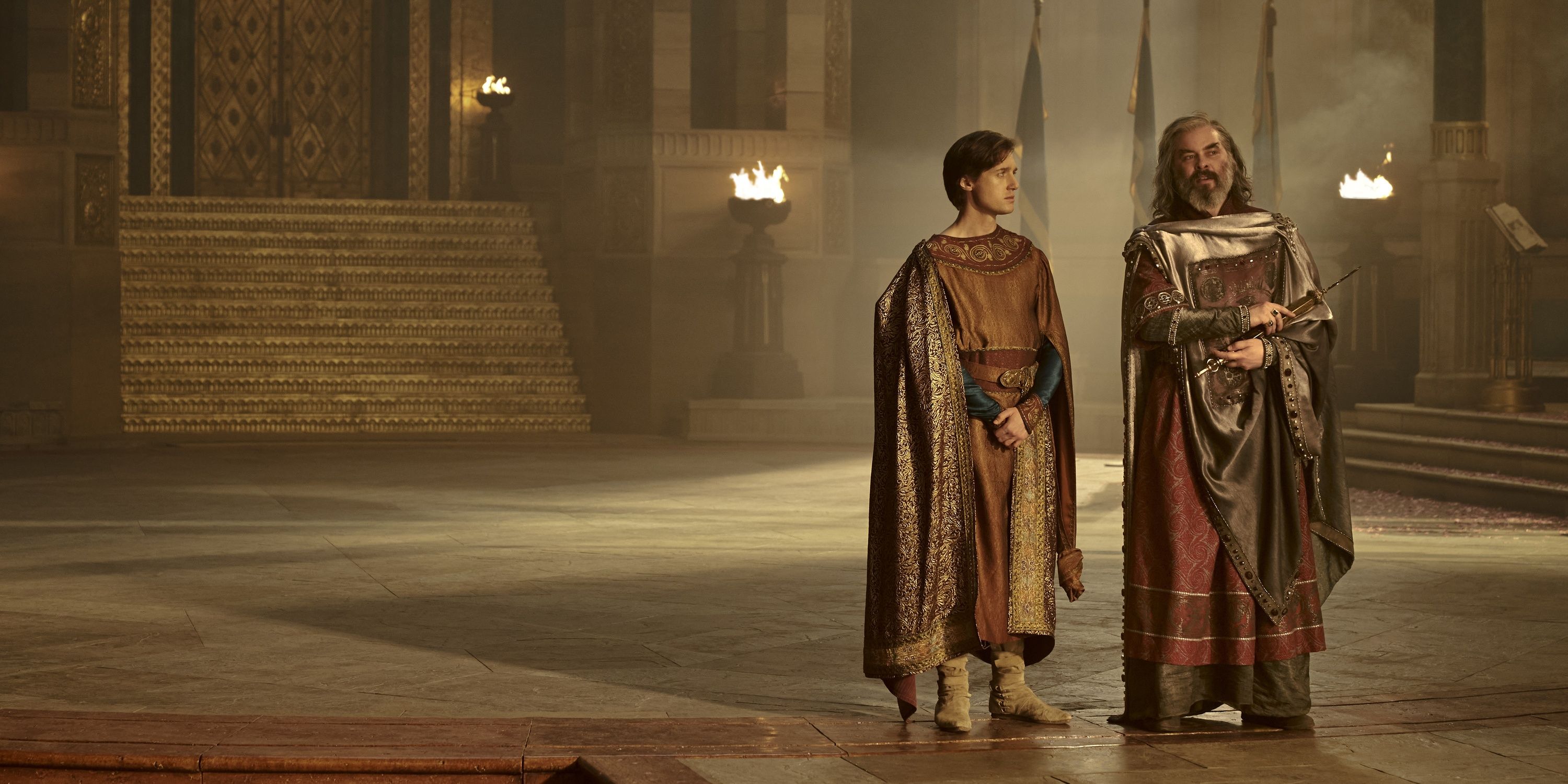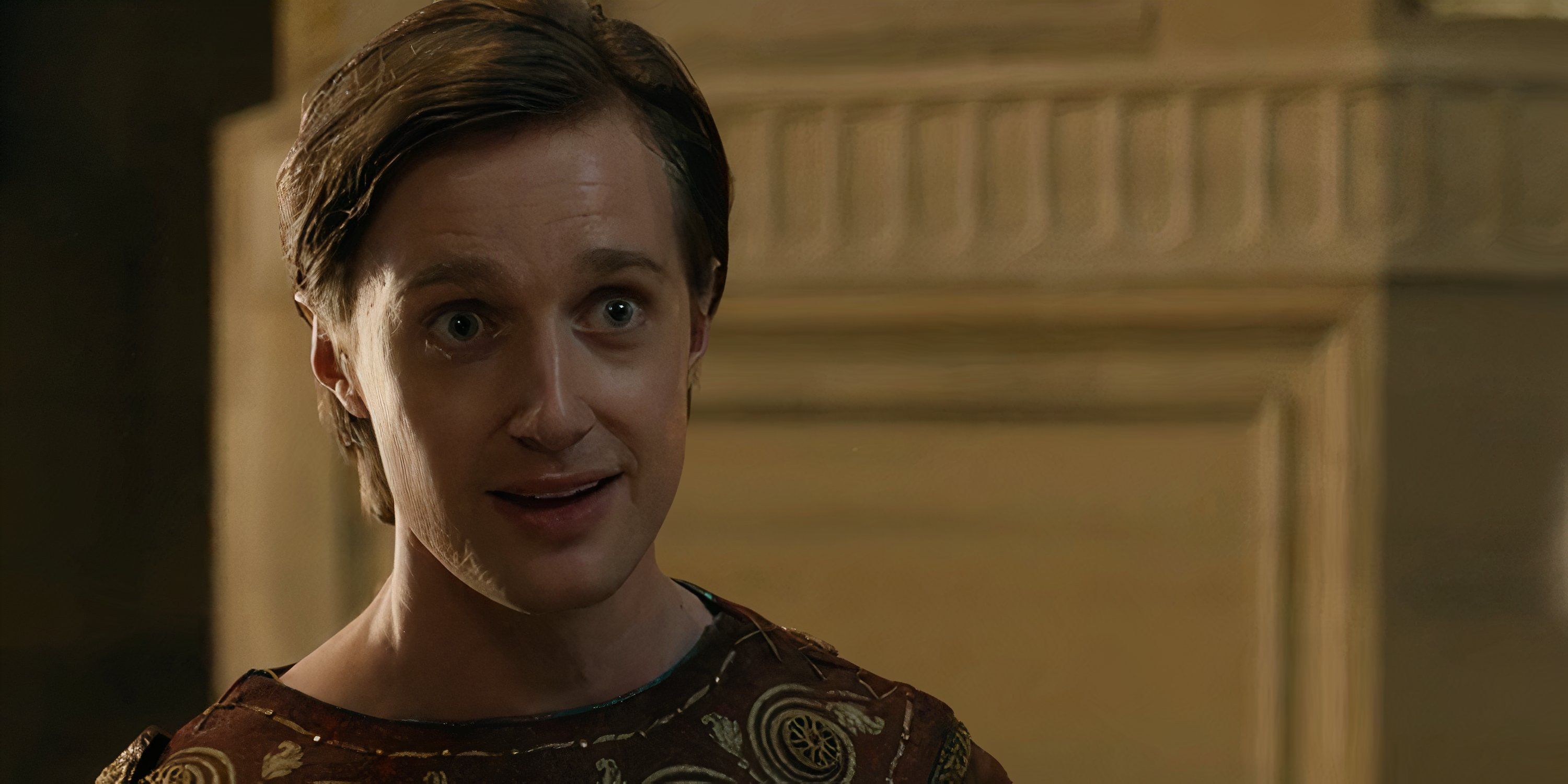The Nazgûl, or Ringwraiths in the Common Speech, were some of the most memorable antagonists in The Lord of the Rings. As explained in both J. R. R. Tolkien’s novel and Peter Jackson’s film adaptations, Sauron gave nine magical rings to the race of Men. These Rings of Power corrupted their wearers, thus bending them to Sauron’s will and transforming them into invisible, undead monsters. Despite their importance in the story, neither the novel nor the films offered much information about who the Nazgûl used to be.
In Jackson’s The Lord of the Rings: The Fellowship of the Ring, Aragorn said that the Nazgûl were “Kings of Men” before Sauron’s rings corrupted them. However, this was not the case in the novel. They must have been somewhat important figures for Sauron to notice them and deem them worthy minions, but Tolkien never specified that they were kings. In the section “Of the Rings of Power and the Third Age” from The Silmarillion, Tolkien explained that some of the future Nazgûl became kings after receiving their Rings of Power, but not all of them: “Those who used the Nine Rings became mighty in their day, kings, sorcerers, and warriors of old.” So who were these mighty characters?
The Two Most Important Nazgûl Had Fearsome Titles

The leader of the Nazgûl did not have a name, but he did have a title: the Witch-king of Angmar. The Witch-king was a powerful sorcerer who founded the kingdom of Angmar in northern Middle-earth. Using the power of Sauron’s ring, he amassed an evil army and laid waste to Arnor, the land from which Gondor had splintered over a millennium prior. An alliance of Gondorians and Elves eventually managed to turn the tide of battle and defeat Angmar, but the Witch-king retreated to fight another day.
It was then that the Elf Glorfindel prophesied no man would kill the Witch-king. During the events of The Lord of the Rings, the Witch-king was one of Sauron’s most powerful and loyal servants. He stabbed Frodo with a Morgul blade at Weathertop, nearly transforming him into a wraith, and he killed King Théoden at the Battle of Pelennor Fields. At that same battle, Éowyn fulfilled Glorfindel’s prophecy and defeated the Witch-king once and for all.
The only Nazgûl to whom Tolkien gave a real name was Khamûl. Unlike the Witch-king, his name and backstory did not appear in The Lord of the Rings. Rather, readers learned about Khamûl thanks to Unfinished Tales: The Lost Lore of Middle-earth. Khamûl was one of the Easterlings, a civilization from the land of Rhûn. Most of the Easterlings allied with Sauron during the War of the Ring, notably participating in the Battle of Pelennor Fields. Khamûl was the second-in-command of the Nazgûl, and it was he who led the search for Frodo in the Shire. Unlike the Witch-king, Tolkien never explicitly detailed Khamûl’s death, but like all the other Nazgûl, he must have met his end fighting at the Battle of the Black Gate or burning in the eruption of Mount Doom after the One Ring’s destruction.
The Other Nazgûl Were Shrouded in Mystery








Tolkien provided scant details about the other seven Nazgûl in The Lord of the Rings. In the chapter “The Battle of Pelennor Fields” from The Return of the King, Tolkien briefly mentioned “Gothmog the lieutenant of Morgul.” Jackson’s films depicted Gothmog as an Orc, but in the novel, his race was never stated. This, combined with his high position of power and seemingly non-Orcish name, led some Tolkien fans to speculate that he was one of the Nazgûl, but this was only a theory. Tolkien disclosed one more clue about the other Nazgûl in one of his letters. He stated that three Nazgûl, including the Witch-king, were Númenóreans. Númenóreans were the ancient ancestors of Dúnedain like Aragorn, many of whom fell to Sauron’s corruption. Between the three Númenórean Nazgûl and one Easterling Nazgûl, that left five of unknown origins.
Facts about the Nazgûl:
In the Elvish language of Quenya, the word for Nazgûl was Úlairi.
Though Tolkien called the Nazgûl “undead,” they were not revived corpses; the Rings of Power prevented them from dying in the first place.
During the War of the Ring, the Witch-king operated from Minas Morgul, and Khamûl operated from Dol Guldur.
There were several civilizations of Men that existed at this point in Middle-earth’s history, including the Drúedain, Northmen, and Haradrim. Of these, the Haradrim were the most probable candidates to become Nazgûl, as like the Easterlings, they allied with Sauron during the War of the Ring. Tolkien often employed symmetry in his writing, such as dividing Thorin’s company of Dwarves into groups with rhyming names. It would therefore make sense if the Nazgûl consisted of three Númenóreans, three Easterlings, and three Haradrim. This setup would also be tactically advantageous for Sauron. It would give him an even number of Nazgûl from the North, East, and South of Middle-earth to assault his enemies in the West from all directions.
Middle-earth Adaptations Created New Nazgûl

Many adaptations of Tolkien’s work have filled out the ranks of the Nazgûl, giving names, titles, and backstories to the other seven. For example, the tabletop role-playing game Middle-earth Role Playing listed them as Dendra Dwar, Jí Indûr, Akhôrahil, Hôarmûrath, Adûnaphel, Ren and Ûvatha Achef. This game also gave the Witch-king a name: Er-Mûrazôr. Jackson’s film trilogies did not flesh out the Nazgûl to such an extent. However, in The Hobbit: The Battle of the Five Armies, the Nazgûl all had unique weapons and armor that implied different cultural backgrounds. Some of them wore helmets resembling those of the Easterlings and Haradrim from Jackson’s earlier The Lord of the Rings: The Return of the King.
Facts about the Witch-king:
In the novel, the Witch-king wielded a mace, but Jackson’s film instead gave him a chained flail to differentiate him from Sauron.
In the novel, Merry is only able to wound the Witch-king because he has a magical knife from Arnor called a Barrow-blade.
Scholars believe that Tolkien based the Witch-king prophecy on that of Shakespeare’s Macbeth.
The Middle-earth story that placed the most emphasis on Nazgûl was the 2017 video game Middle-earth: Shadow of War. The crux of this game’s plot revolved around a Ranger named Talion hunting down the Nazgûl and struggling with his transformation into a wraith. The game introduced three new Nazgûl: a Haradrim king named Suladân and two Easterling princesses named Riya and Yukka. More controversially among Tolkien fans, it also reimagined two existing The Lord of the Rings characters as Nazgûl. The first was Isildur, the King of Gondor who defeated Sauron at the War of the Last Alliance and claimed the One Ring.
According to the game, Sauron resurrected him after his canonical death and forced him into servitude. The second was Helm Hammerhand, the mighty King of Rohan who gave Helm’s Deep its name. In the game, Sauron saves him from the battle that sealed his fate in the novel, and he transforms into a bloodthirsty berserker. These different takes on the Nazgûl showed that fans have always hungered for more information about them, a testament to Tolkien’s deep and complex worldbuilding.
The Rings of Power May Have Its Own Nazgul in Mind








The Rings of Power series offers perhaps the best opportunity yet to explore the tale of the Nine Men’s fall to the Nazgûl. In the massive Appendix to The Return of the King, Tolkien specifies that all of them have become Ringwraiths by the year 2251 of the Second Age, over a thousand years before Numenor sinks into the sea. The Rings of Power, however, has compressed Tolkien’s timeline a great deal to craft key events into a formal narrative.
That means it’s likely that one or more of the characters who have already appeared are doomed to become Ring Wraiths. The most obvious candidate is al-Pharazon, played by Trystan Gravelle. He’s the last king of Numenor according to Tolkien, and will preside over the destruction of his kingdom: making him almost tailor-made for a Nazgûl. Other characters, such as al-Pharazon’s son Kamen, may be eligible as well, having been created specifically for the series rather than coming from Tolkien, and thus able to become anything the showrunners wish.
The only two out of the running are Elendir and Isildur, whose destiny lies with the Last Alliance of Men and Elves depicted at the beginning of Peter Jackson’s version of The Lord of the Rings. Tolkien left the Nazgûl’s human lives all but unmentioned, which gives projects like The Rings of Power a golden opportunity to develop an explanation. Its success or failure will ultimately depend on how well it accomplishes such tasks.
The Lord of the Rings movie trilogy and The Hobbit movie trilogy are currently streaming on Max. The Lord of the Rings: The Rings of Power is currently streaming on Amazon Prime.




